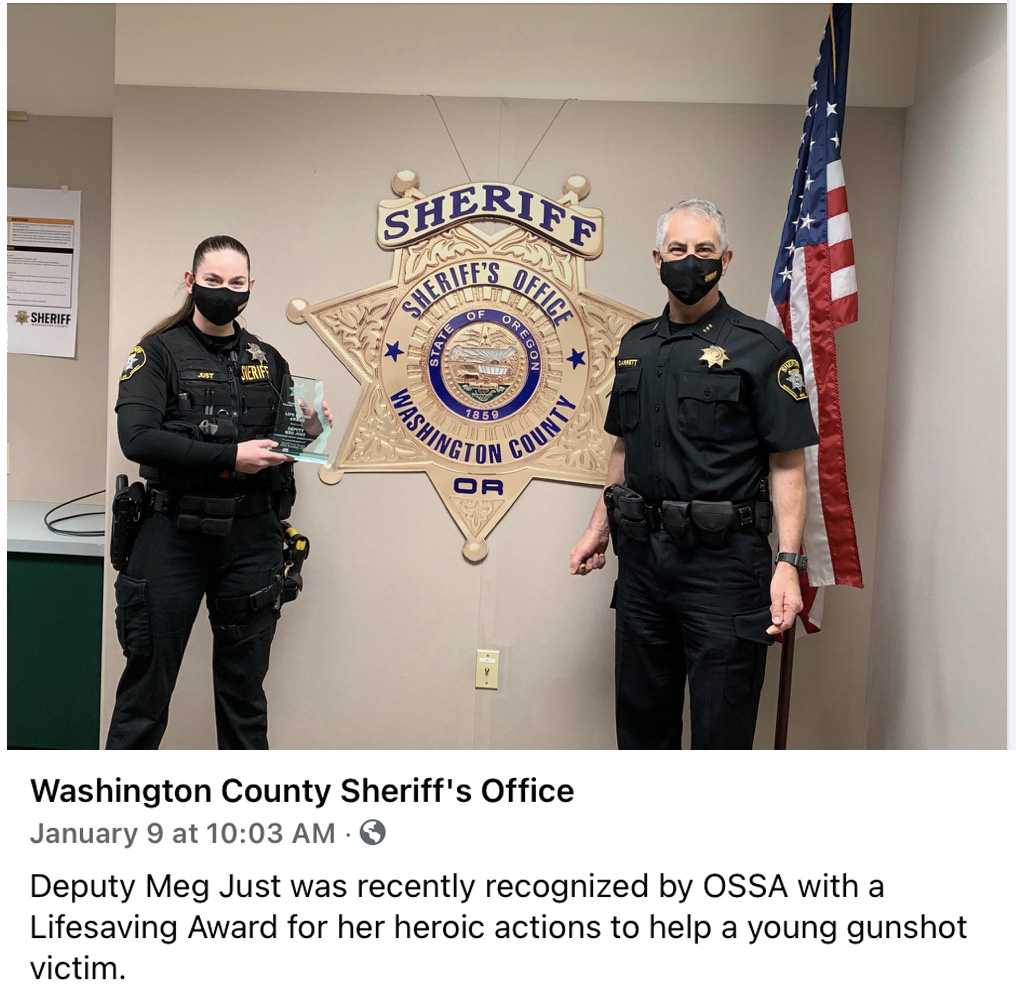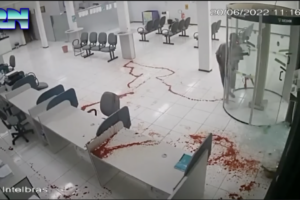
Deputy receives Lifesaver Award one month after online training and credits Crisis Medicine
- Posted by Mike Shertz MD/18D
- Categories (M) Massive Hemorrhage, (R) Respiration
🕖 Reading Time, 3 minutes
When Deputy Just responded to a call regarding gunfire, she didn’t know there was a victim until she heard the 911 operator giving care instructions to bystanders.
She arrived near-simultaneously with four other officers. As they provided security, she began assessing the casualty. Deputy Just pressed ineffective bystanders out of the way, laid the casualty down, and began rendering aid.
Deputy Just had completed the Crisis Medicine Tactical Casualty Care class only one month prior. “I felt totally confident. If I hadn’t taken the class, I would not have known what to do.” She immediately recognized the bubbling gunshot wound on the casualty’s chest as a “sucking chest wound” from the videos she had seen in class. As she was occluding it, she noted “spurting blood” from another gunshot wound above the casualty’s clavicle. She didn’t have wound packing materials readily at hand, so instead, she placed her finger into the wound, which controlled the bleeding.
The most surprising part of the event to Deputy Just? “The blood was really hot.”
While awaiting responding fire, she noted that periodically the injured side of his chest would “get hard”. She presumed this was tension pneumothorax and “burped” the wound several times. Every time she did this, she said the wound would “fart at her” as it released pressure.
The casualty had his clavicular wound packed by a responding fire paramedic, developed tension pneumothorax during EMS transport to the trauma center, and was successfully needle decompressed.
“I took the online class, and it totally prepared me… I was literally sitting in a patrol car running radar, watching the course on my MDT. The videos really stuck in my head. The course was not hands-on, but it was clear enough I could provide care without ever having laid hands on a person.”
We’re proud of Deputy Just and appreciate her quick thinking under stress and service to her community. Thanks to the Washington County Sheriff’s Office who was forward-thinking enough to provide this online training to 200 county law enforcement during a time in-person training was unavailable because of COVID.
In discussion with the Firefighter/Paramedic who took over care of the casualty, coincidentally one of my tactical medics with the Sheriff’s Office, he said the supra-clavicular wound would spurt without direct pressure. He noted pulses while packing it with gauze, but did not specifically identify the point of bleeding. He also noted quite a bit of crepitus while packing, which caused him to pack lighter than he might have otherwise. With an emergency trauma dressing in place over the packed wound, external bleeding seemed to have been controlled.
A chest seal was placed over the open pneumothorax but was covering the anterior chest landmarks for needle decompression. This lead to some confusion on how best to decompress the patient when he developed tension pneumothorax. The easiest solution in this situation would be to decompress in the anterior axillary, or mid-clavicular location. There was a concern regarding decompressing directly through the plastic adhesive of the chest seal because the 10g needle might make a “cookie cut out” of the seal and occlude the catheter or needle. Another consideration they had was peeling up the bottom of the seal to decompress in the anterior chest location but then the seal itself would have put pressure on the catheter, causing subsequent kinking.
Finally, since the super clavicular wound was packable, meaning it was a contained space and not simply emptying into the thorax/chest, XSTAT would likely have been the perfect solution for this wound. For more information on our experience with XSTAT, see the article on packing a hog thigh with it, and a race between packing with XSTAT versus with normal Kerlix Gauze.
Interested to learn more? Try our online courses, or get started with a sample of the material in the preview course
Preview CourseNot sure? Try a preview TRAIN NOWOnline Tactical Casualty Care Classes
Dr. Mike Shertz is the Owner and Lead Instructor at Crisis Medicine. Dr. Shertz is a dual-boarded Emergency Medicine and EMS physician, having spent over 30 years gaining the experience and insight to create and provide his comprehensive, science-informed, training to better prepare everyday citizens, law enforcement, EMS, and the military to manage casualties and wounded in high-risk environments. Drawing on his prior experience as an Army Special Forces medic (18D), two decades as an armed, embedded tactical medic on a regional SWAT team, and as a Fire Service and EMS medical director.
Using a combination of current and historical events, Dr. Shertz’s lectures include relevant, illustrative photos, as well as hands-on demonstrations to demystify the how, why, when to use each emergency medical procedure you need to become a Force Multiplier for Good.



